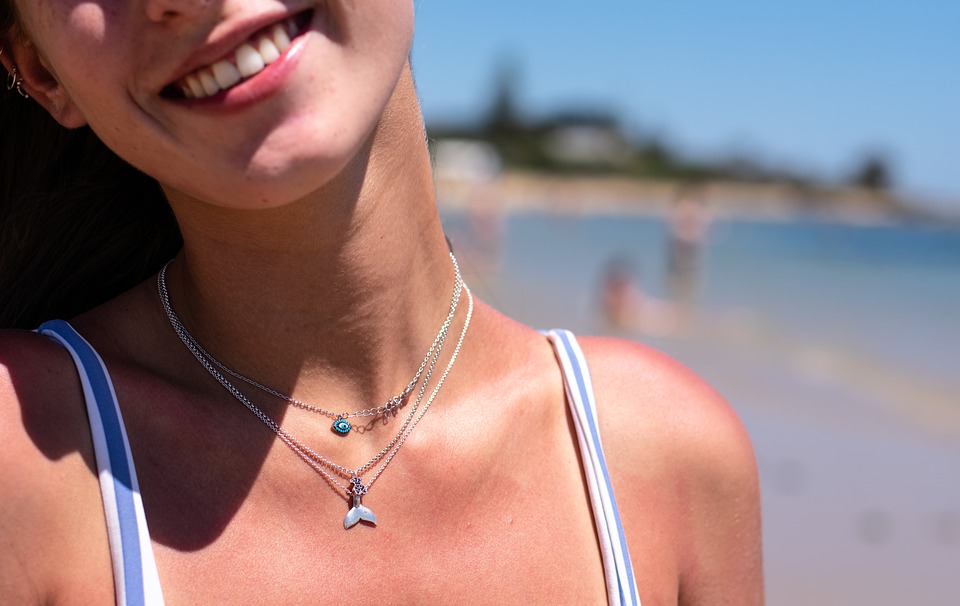If you find yourself developing a rash after wearing certain pieces of jewelry, you may have an allergy to nickel. This may surprise you because the rash probably seems to be coming from a piece of gold or silver jewelry, but those metals aren’t typically allergenic. Most inexpensive jewelry that appears to be gold or silver is really made of a base metal (often nickel) coated in a thin layer of one of these precious metals. As the nickel comes in contact with your skin, it can cause an allergy-induced rash.

(Pixabay / benwehrman)
A nickel allergy is one of the most common sources of allergic contact dermatitis, which is a skin rash caused by making physical contact with an allergen. According to the American Academy of Dermatology, more than 18 percent of people in North America are allergic to nickel.
What does a nickel allergy look/feel like?
The rash resulting from nickel allergy is usually raised, red, and maddeningly itchy. In some cases, it can result in blisters or dryness and thickening of the skin. The rash may develop immediately, but it could take up to a few hours to manifest. It may last for up to four weeks and, in some cases, may become infected.
Where does nickel allergy develop?
Nickel allergy from jewelry typically manifests in the following places:
- Earlobes (from earrings)
- Neck (from necklaces)
- Fingers (from rings)
- Hands (from handling the jewelry)
What else causes nickel allergy?
Nickel is found in other commonly-handled items besides just jewelry. You can find nickel in zippers and other clothing fasteners, eyeglass frames, laptops, and cellphones. Coins are a problem, too; nickels, dimes, and quarters are all made from copper-nickel alloys. Nickel can even be found in detergents and cosmetics such as eye shadow.
Some foods contain nickel, including soybeans, soy sauce, tofu, buckwheat, clams, cashews, and figs. Most people with nickel allergy don’t react to these foods, but those with severe nickel allergy may.
People who are in professions where they are regular touching nickel-containing items or instruments or solutions with nickel are more prone to develop nickel allergy.
Can I still wear jewelry?
Even if you have a nickel allergy, your jewelry-wearing days don’t need to be over. You will, however, need to use more care in your purchases. Look for jewelry that is nickel-free or hypoallergenic. This may include jewelry made from surgical-grade stainless steel, pure sterling silver, platinum, or yellow gold that is greater than 18 karats. Some people can get by with coating the posts of their nickel earrings with a bit of nail lacquer before putting them into their ears. If this does work for you, make sure to re-apply the coating regularly.
How else can I avoid items containing nickel?
If your cellphone or other personal computing device triggers your nickel allergy, make sure to keep it in a protective cover. If your clothing fasteners, including zippers, snaps, and bra hooks, irritate your skin, you could have them replaced with plastic ones. You could also try the clear nail polish trick here to create a barrier between the fastener and your skin. Just remember to paint on more of the polish from time to time. If you wear glasses, make sure to choose plastic or titanium frames instead of those that contain nickel.
How long do nickel allergy symptoms last?
Unfortunately, there’s no cure for nickel allergy, but there are ways to avoid it and to treat the symptoms. You can start with over-the-counter creams to treat the rash. If that doesn’t work, see a doctor for more options. You should also see a doctor if your rash shows any signs of infection, including turning painful, feeling warm to the touch, or emitting pus.


